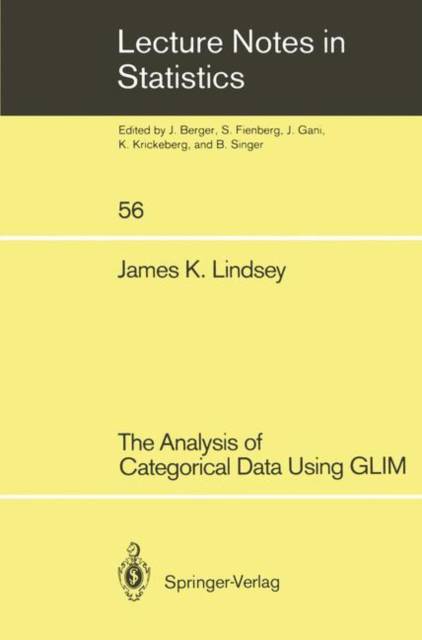
- Afhalen na 1 uur in een winkel met voorraad
- Gratis thuislevering in België vanaf € 30
- Ruim aanbod met 7 miljoen producten
- Afhalen na 1 uur in een winkel met voorraad
- Gratis thuislevering in België vanaf € 30
- Ruim aanbod met 7 miljoen producten
Zoeken
Omschrijving
The present text is the result of teaching a third year statistical course to undergraduate social science students. Besides their previous statistics courses, these students have had an introductory course in computer programming (FORTRAN, Pascal, or C) and courses in calculus and linear algebra, so that they may not be typical students of sociology. This course on the analysis of contingency tables has been given with all students in front of computer terminals, and, more recently, micro- computers, working interactively with GLIM. Given the importance of the analysis of categorical data using log linear models within the overall body of models known as general linear models (GLMs) treated by GLIM, this book should be of interest to anyone, in any field, concerned with such applications. It should be suitable as a manual for applied statistics courses covering this subject. I assume that the reader has already a reasonably strong foundation in statistics, and specifically in dealing with the log-linearllogistic models. I also assume that he or of GLIM itself. In she has access to the GLIM manual and to an operational version other words, this book does not pretend to present either a complete introduction to the use of GLIM or an exposition of the statistical properties of log-linearllogistic models. For the former, I would recommend Healy (1988) and Aitkin et al (1989). Por the latter, many books already exist, of which I would especially recommend that of Pingleton (1984) in the present context.
Specificaties
Betrokkenen
- Auteur(s):
- Uitgeverij:
Inhoud
- Aantal bladzijden:
- 168
- Taal:
- Engels
- Reeks:
- Reeksnummer:
- nr. 56
Eigenschappen
- Productcode (EAN):
- 9780387970295
- Verschijningsdatum:
- 20/09/1989
- Uitvoering:
- Paperback
- Formaat:
- Trade paperback (VS)
- Afmetingen:
- 156 mm x 234 mm
- Gewicht:
- 258 g

Alleen bij Standaard Boekhandel
+ 282 punten op je klantenkaart van Standaard Boekhandel
Beoordelingen
We publiceren alleen reviews die voldoen aan de voorwaarden voor reviews. Bekijk onze voorwaarden voor reviews.











